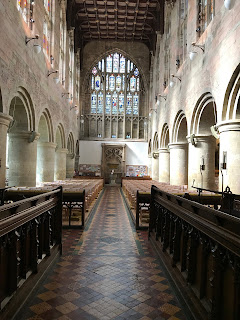-->
In William
Cross’s own words, ‘This is a dirty little book.’ In it he publishes the
ditties and rude limericks from two adventurous but ultimately tawdry figures of the 1920’s – one ‘a
bright young thing,’ the other less youthful but appreciating it greatly in others.
Lois Sturt was nineteen when she hitched up with the thirty-nine year-old and
married Reginald Pembroke. Pembroke was a peer of the realm, an earl and major
landowner. Lois was the daughter of a baron who later went on to marry the
predatory homesexual Evan Morgan. She died with chronological neatness—in
Budapest—aged thirty-seven in 1937.
In between she
bedded Prince George, Duke of Kent, Edward Boulanger, Duff Cooper, Tim Cooper,
Augustus John and Luffy Loughborough. She partied hard, drank harder, and starred
as Nell Gwyn in The Great Adventure –
the first British colour film. She trained racehorses and flew planes. A rich
life that took its toll.
And this is the
beauty of this wicked, scurrilous and gossipy book, the kind of history that never finds it way into school textbooks. The limericks and ditties are puerile – one of their bedtime hobbies in between other things, but they'll fascinate those who like peering through keyholes. Cross, though, intersperses their ditties with other
examples doing the rounds at the time, which makes fascinating history but left
me a little confused as to which belonged to whom.
One can take a
high moral stand, in Plato’s words: Wise men speak because they have something
to say; Fools because they have to say something.’ In other words it isn’t
great poetry, but it does allow some insight into the time. And it's
not all bad verse and bawdy shenanigans. Reggie is quite clearly in love:
I want you to be
sitting beside me when I write. I want you to come and fish with me and walk with
me and God how I want you to sleep with me . . . It is as you say almost
terrifying to want anyone so much, but it is wonderful too isn’t it darling and
when we remember that we flighty and light-hearted creatures, who have never
stuck to anyone much longer than six weeks at a time, should have been
absolutely faithful to each other for nearly 2 years . . . it makes it more
wonderful still.
In fact the affair lasted off and on until 1926 when Reggie
went back to his long suffering but dutiful wife who refused to divorce
him.
The book then opens a little known window into an age long gone, though it must be
remembered that some wouldn’t recognise brightness if it hit them in the face.
Father John Degan for one. In a sermon, he urged upon women his own ten commandments:
1 Don’t parade the streets as if
you were ‘in search of an adventure’
2 Don’t accept jewelry, clothing,
or money from men folk, especially if they be blackmen
3 Never either enter a public house
or a nightclub
4 Avoid those dancing halls where
‘dipping’ and other low class antics are tolerated
5 Leave cigarettes, intoxicants,
and drugs severely alone
6 Remember that powder and paint
and daring frocks are the hallmarks of the minx
7 Play hockey or lacrosse in winter
and tennis in summer, but leave football to the men.
8 Beware of the ‘something for
nothing’ man with marcel-waved hair, who offers you a joyride in his car.
You’ve got the drift.
Father John's s own solution
for raising up wholesome boys was the provision of a toolshed and a couple of
hundred adventure books. And to discourage any daughter from becoming a
‘helter-skelter, promenading flapper,’ the provision of a piano, some sheet music
and a sewing machine would do the trick. You’ll have to buy the book to discover
what one rebellious girl sent him on Valentine’s day.
As I said, a
wicked, scurrilous and gossipy book and blessed, as always, with copious
footnotes that lead you down into other rabbit holes.























